Since medieval times, few people had the right to vote (“suffrage”). Parliament was rotten, representation was unequal, and elections were corrupt. The 1800s saw three Reform Acts (1832, 1867, 1884) extend voting rights, but there was a way to go before universal suffrage. By the 1885 General Election, 100% of women were still disenfranchised (deprived of the right to vote) and approximately 40% of men.
In 1819 thousands gathered at St Peter’s Field in Manchester to demand parliamentary reform at a time of poor economic conditions. The cavalry, under orders from local magistrates, charged on the crowd with sabres, murdering and injuring many people in what became known as the Peterloo Massacre.
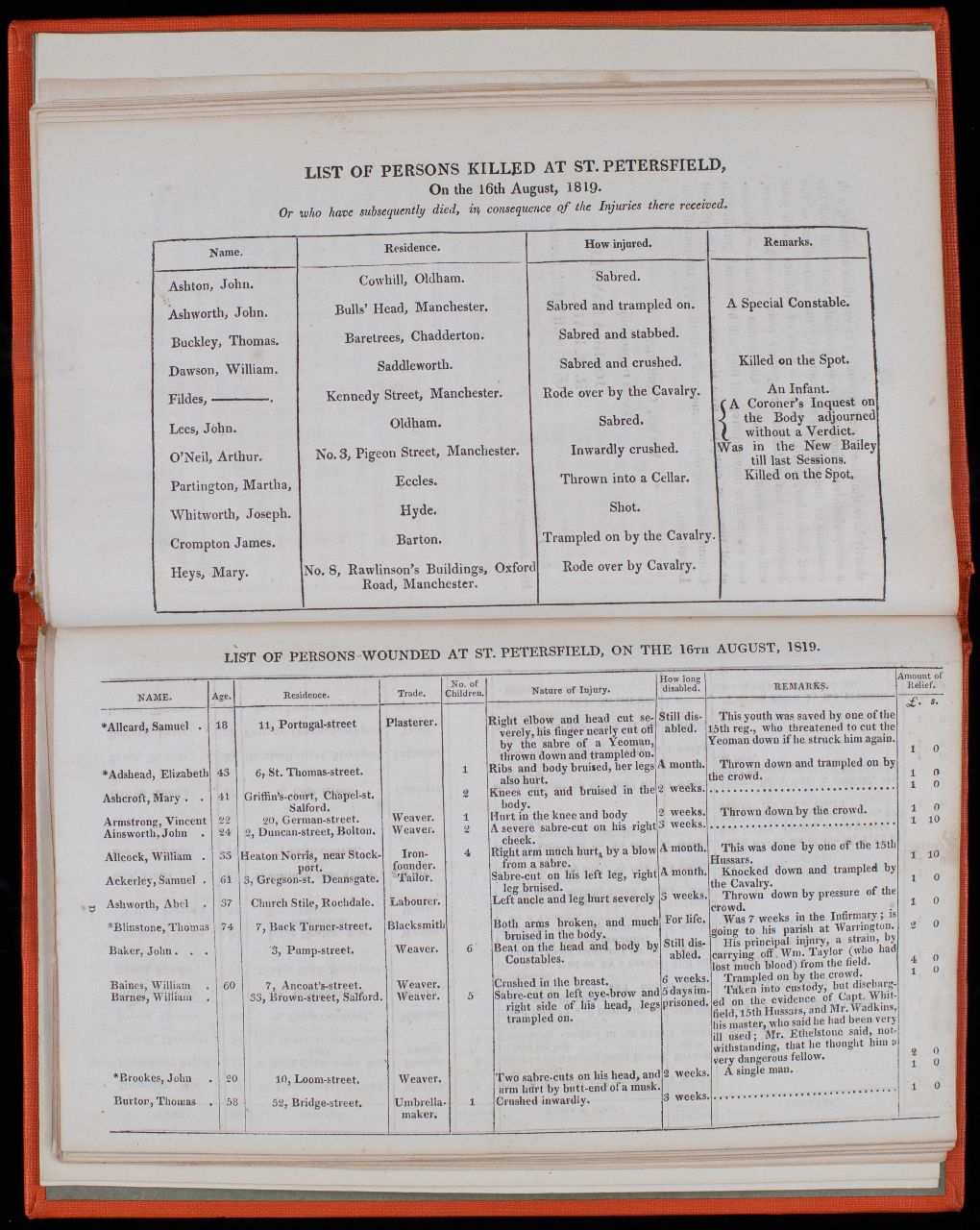
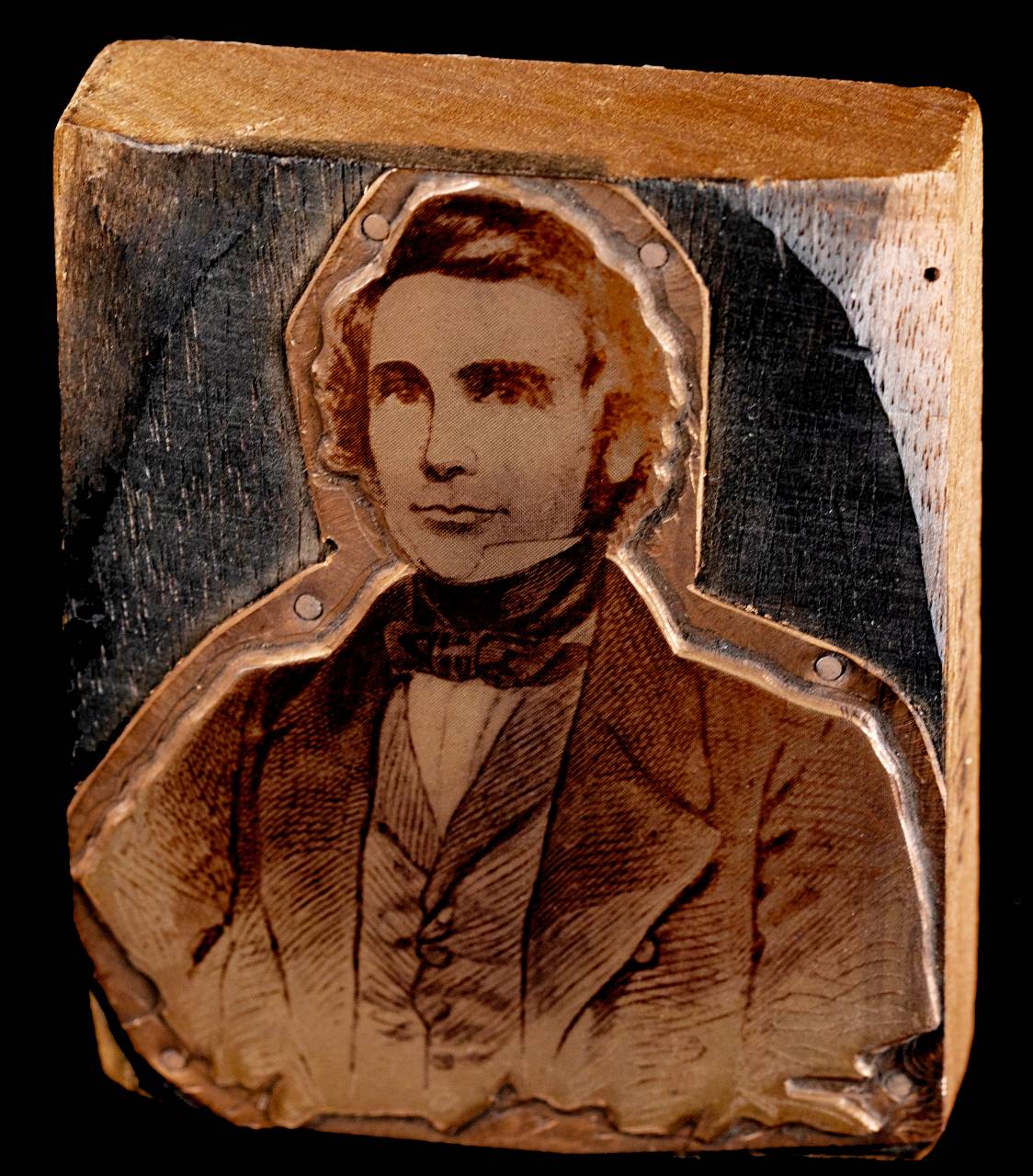 William Lovett founded the London Working Men’s Association (LWMA) in 1836 after the Reform Act 1832 failed to extend the franchise far enough. He was one of the leaders of the Chartist political movement which sought working-class male suffrage. This copper portrait of Lovett was produced by the Fabian Society; a socialist organisation whose members founded LSE in 1895.
William Lovett founded the London Working Men’s Association (LWMA) in 1836 after the Reform Act 1832 failed to extend the franchise far enough. He was one of the leaders of the Chartist political movement which sought working-class male suffrage. This copper portrait of Lovett was produced by the Fabian Society; a socialist organisation whose members founded LSE in 1895.
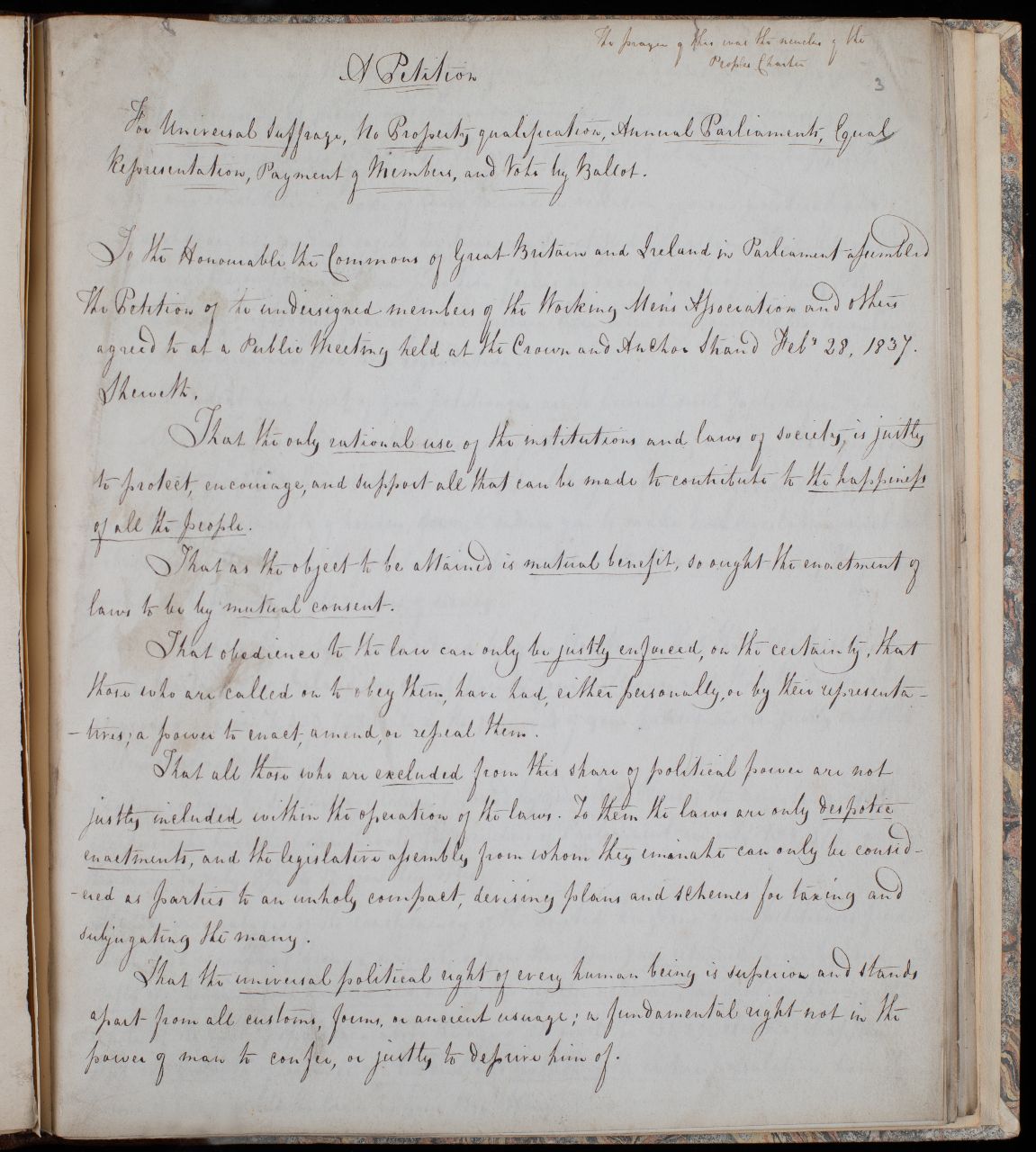 Six MPs and six working-class men including Lovett published the People’s Charter (1838). It demanded reforms including a secret ballot, suffrage for all men over age 21, and the abolition of the property qualification.
Six MPs and six working-class men including Lovett published the People’s Charter (1838). It demanded reforms including a secret ballot, suffrage for all men over age 21, and the abolition of the property qualification.
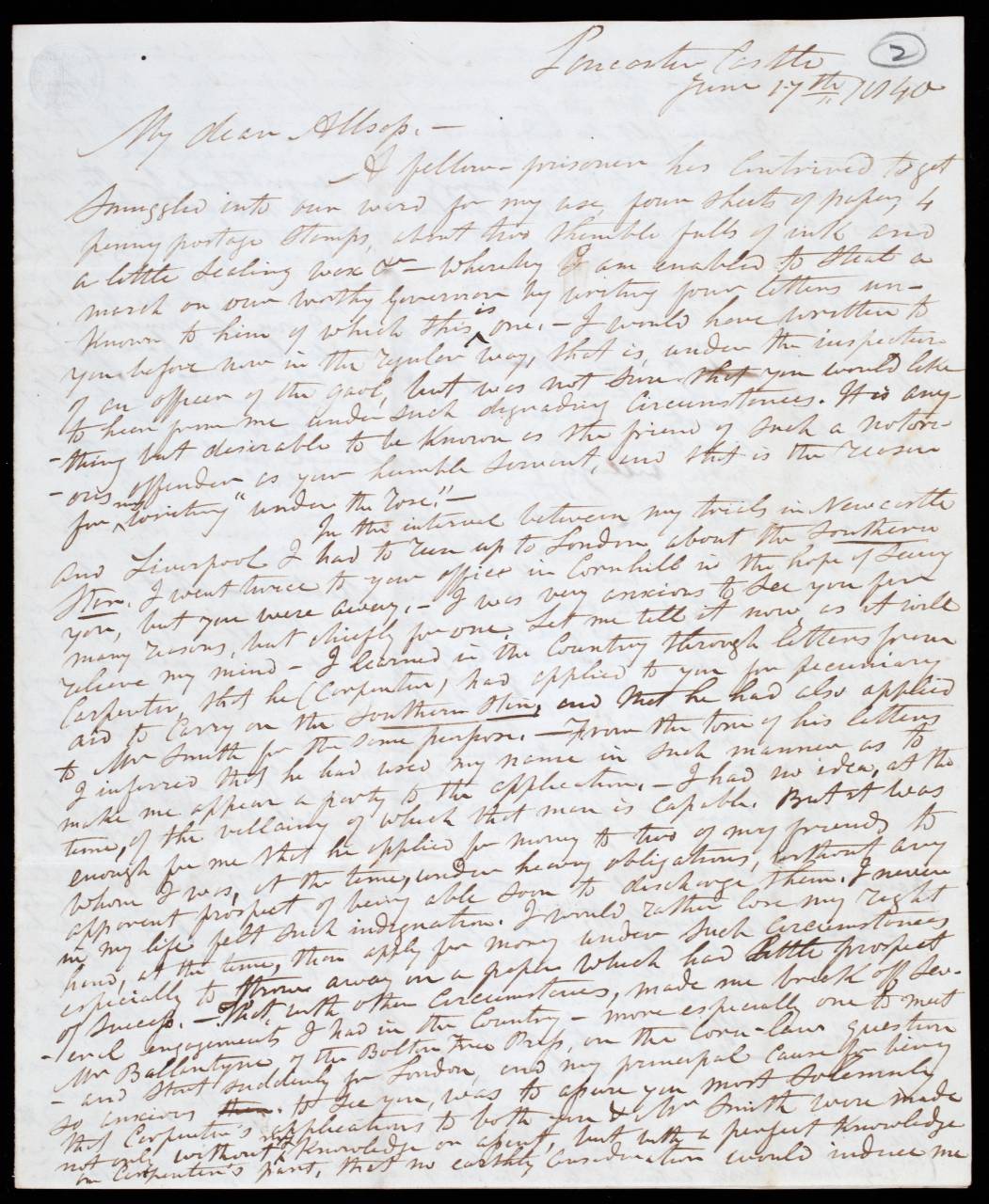 Download a partial transcription of these letters provided by Dr Paul Keenan (LSE International History).
Download a partial transcription of these letters provided by Dr Paul Keenan (LSE International History).
James Bronterre O’Brien was an Irish chartist and member of the LWMA. He clashed with chartist Feargus O’Connor over whether using violence is acceptable to achieve reform. Written from Lancaster prison where O’Brien was serving 18 months for making seditious speeches, the challenging handwriting in the letter shows some of the difficulties involved in understanding evidence from the past.
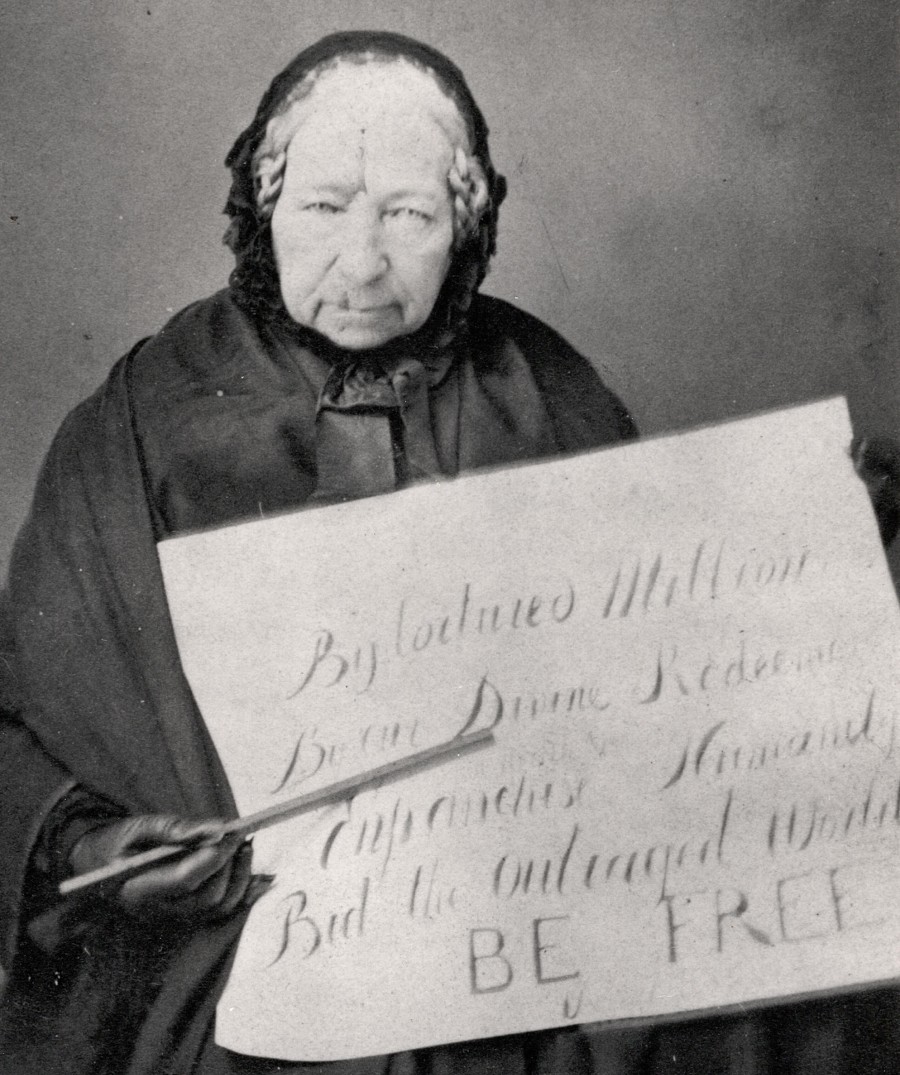 Women played a critical role in furthering the chartist’s cause and organised their own chartist organisations. Anne Knight, a Quaker from Chelmsford, criticised chartist men for believing the class struggle was more important than women’s rights. She also campaigned for the People’s Charter to include suffrage for women, but the male chartists refused. Anne Knight would go on to establish one of the first organisations campaigning for women’s suffrage. Anne Knight is photographed here in the 1850s with a sign that reads “By tortured millions, By the Divine Redeemer, Enfranchise Humanity, Bid the Outraged World, BE FREE”.
Women played a critical role in furthering the chartist’s cause and organised their own chartist organisations. Anne Knight, a Quaker from Chelmsford, criticised chartist men for believing the class struggle was more important than women’s rights. She also campaigned for the People’s Charter to include suffrage for women, but the male chartists refused. Anne Knight would go on to establish one of the first organisations campaigning for women’s suffrage. Anne Knight is photographed here in the 1850s with a sign that reads “By tortured millions, By the Divine Redeemer, Enfranchise Humanity, Bid the Outraged World, BE FREE”.
Examples of election leaflets from Northumberland, 1830s.
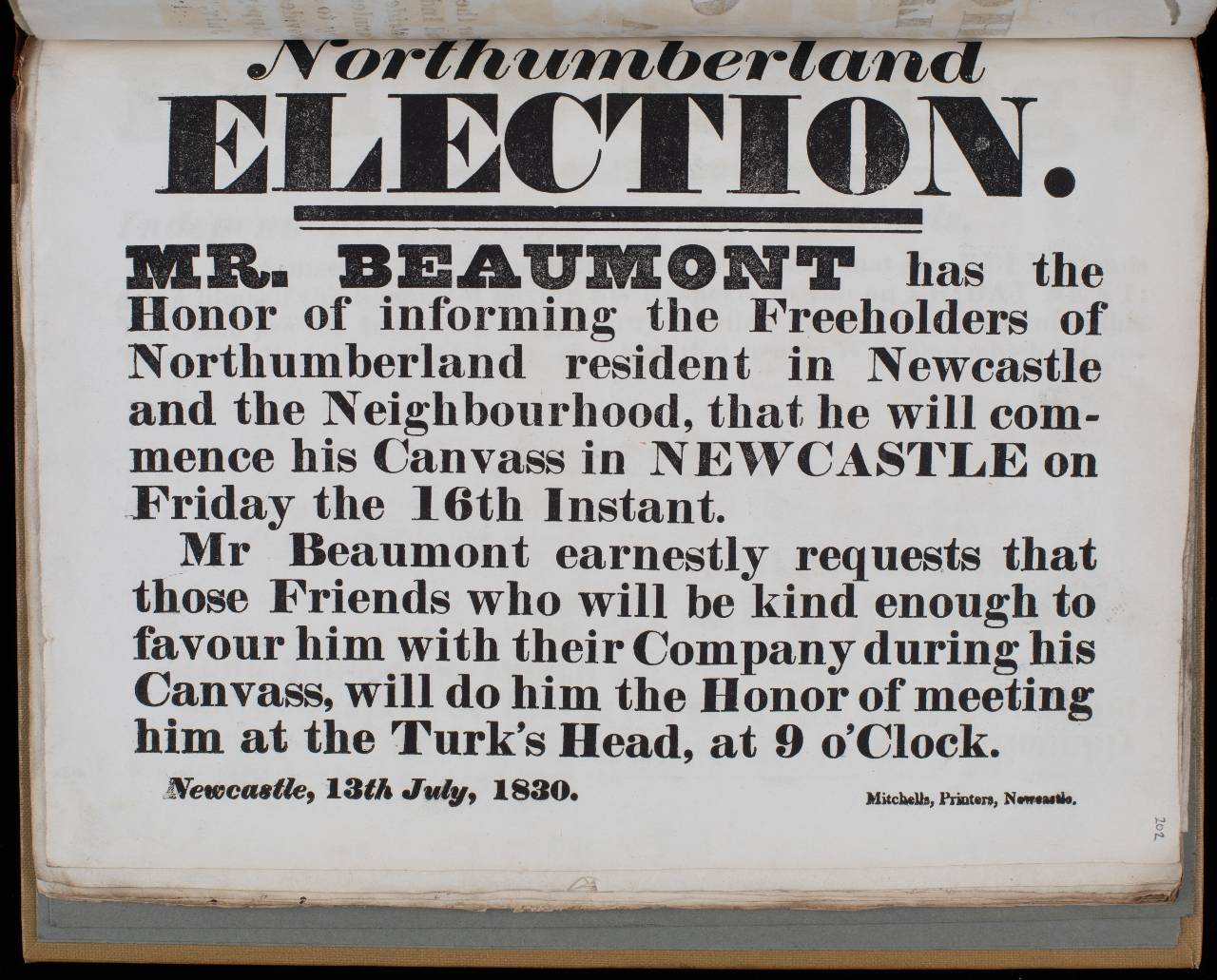
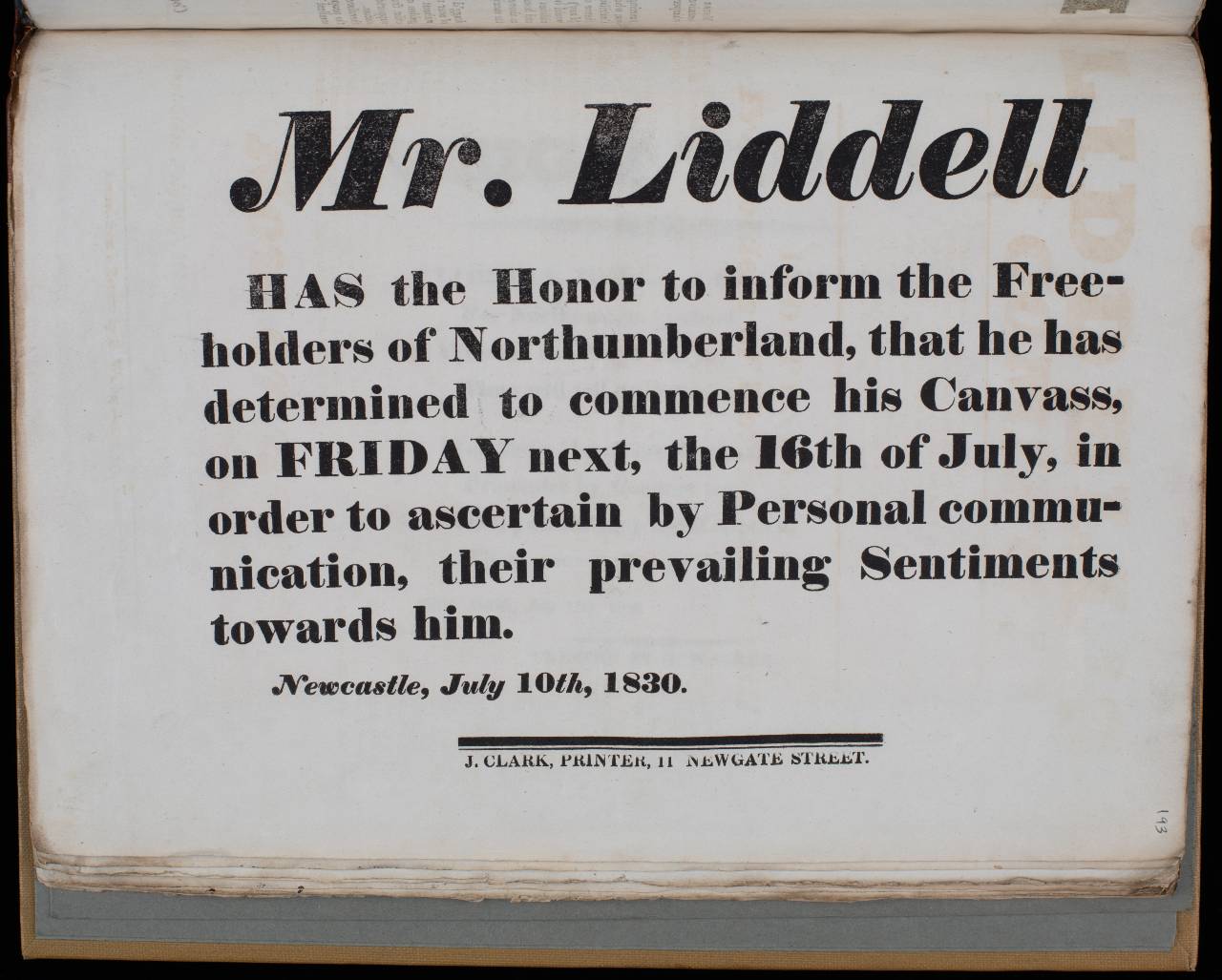
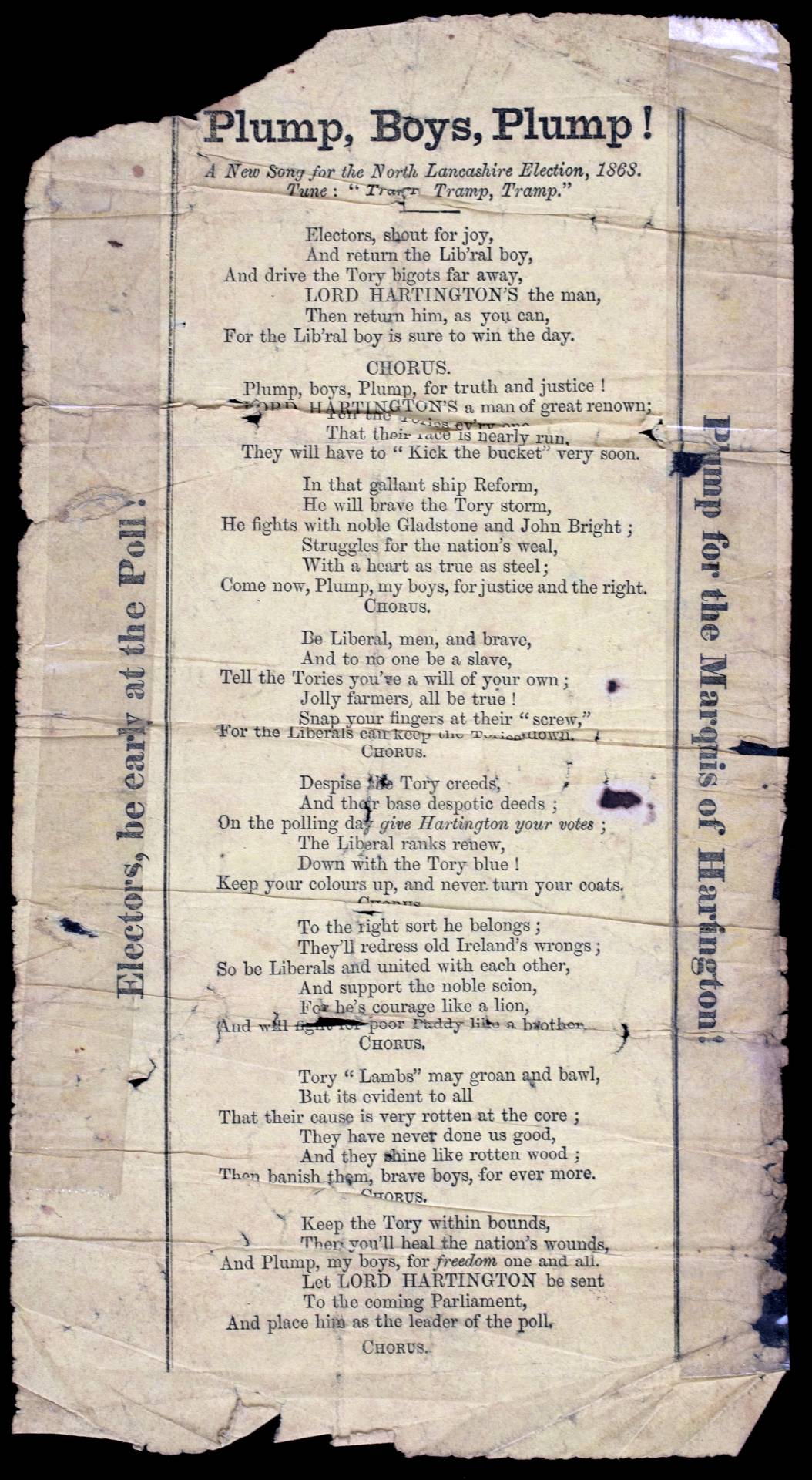 A Liberal Party Election song lending support to the Marquis of Hartington for the general election in 1868. The song is sung to the tune of “Tramp, Tramp, Tramp”. This election was the last where votes were cast by a show of hands, after the passing of the Secret Ballot Act of 1872.
A Liberal Party Election song lending support to the Marquis of Hartington for the general election in 1868. The song is sung to the tune of “Tramp, Tramp, Tramp”. This election was the last where votes were cast by a show of hands, after the passing of the Secret Ballot Act of 1872.
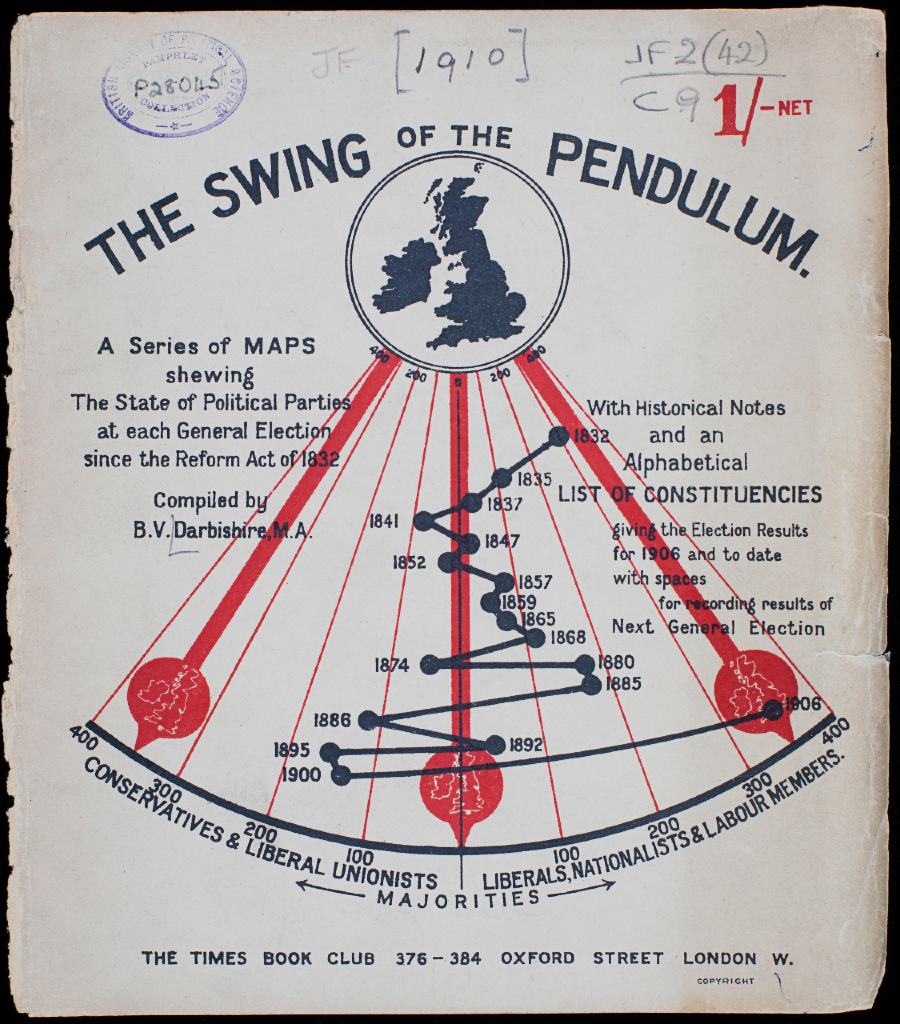 Drawn by Welsh mapmaker Bernard Vernon Darbishire and published by the Times Book Club in 1910, this map shows the state of political parties at each general election since the Reform Act of 1832.
Drawn by Welsh mapmaker Bernard Vernon Darbishire and published by the Times Book Club in 1910, this map shows the state of political parties at each general election since the Reform Act of 1832.
Go to the next page